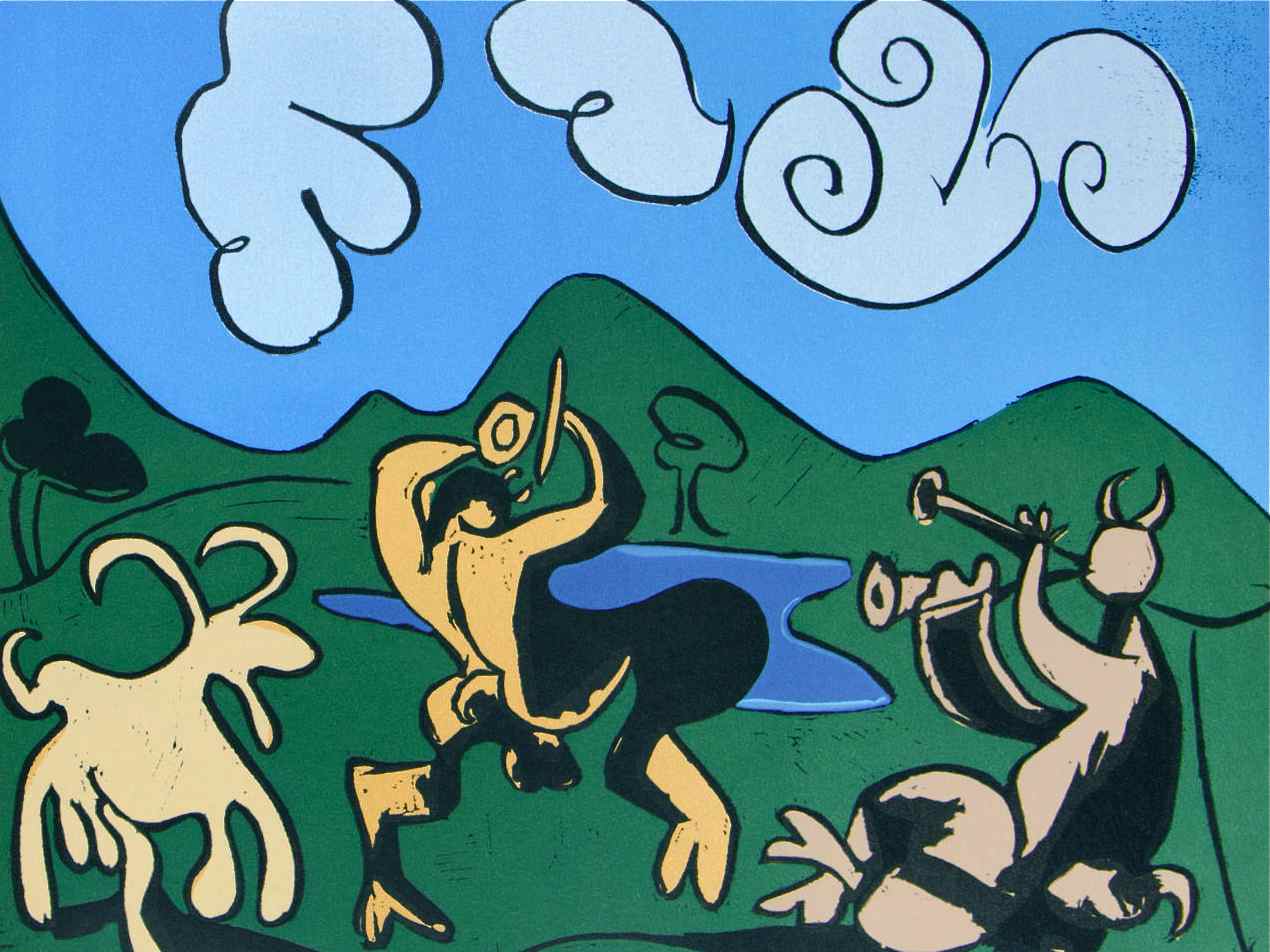

Title: Two Satyrs & Goat Linocut Print Artist By Pablo Picasso
Shipping: $39.00
Artist: N/A
Period: 20th Century
History: N/A
Origin: Southern Europe > Spain
Condition: Museum Quality
Item Date: 1963
Item ID: 5627
Linocut Print 31 **Pablo Picasso Spanish, 1881-1973 Original Book Linocut, Edition Book Print. Gouge, scraper, and penknife. This print is from. The book, 1963, by Wilhelm Boeck, comprising 45 facsimile colour linocuts, with title-page. First published in Great Britain 1963, bound as issued in the original linen covered boards and slipcase, overall 325 x 393mm (12 3/4 x 15 1/2in) Picasso made many linocuts, a process that he found hugely stimulating. These linocuts were first issued in signed editions. Picasso invented the ‘reduction’ method, progressively cutting the same linoblock for each new colour, making it impossible to take any further prints from the original plates. In 1962, in collaboration with Picasso and Galerie Louise Leiris, new linoleum plates were made at 42% of the original size, and it was from these that the prints on offer here were made. Pablo Picasso’s long life (1881-1973). With his art fetching some of the highest prices ever seen at auction, books featuring his illustrations have also become highly collectible. However, the Picasso portfolio spreads far and wide, and it’s possible to find long out-of-print books showcasing his art and fascinating retrospectives As arguably the most influential artist of the 20th century, he illustrated many books and countless books have been published detailing aspects of his art from his Blue and Rose Periods to Cubism and his later work took him around the globe. There are also numerous biographies about this man who is believed to have produced more than 50,000 pieces of art including paintings, drawings, prints, sculptures, ceramics and tapestries. In the 1950s and 1960s, Picasso turned increasingly to printmaking.
http://en.wikipedia.org/wiki/Pablo_Picasso
Pablo Ruiz y Picasso, known as Pablo Picasso (Spanish: 25 October 1881 8 April 1973) was a Spanish painter, sculptor, printmaker, ceramicist, and stage designer who spent most of his adult life in France. As one of the greatest and most influential artists of the 20th century, he is widely known for co-founding the Cubist movement, the invention of constructed sculpture, the co-invention of collage, and for the wide variety of styles that he helped develop and explore. Among his most famous works are the proto-Cubist Les Demoiselles d'Avignon (1907), and Guernica (1937), a portrayal of the German bombing of Guernica during the Spanish Civil War. Picasso, Henri Matisse and Marcel Duchamp are commonly regarded as the three artists who most defined the revolutionary developments in the plastic arts in the opening decades of the 20th century, responsible for significant developments in painting, sculpture, printmaking and ceramics. Picasso demonstrated extraordinary artistic talent in his early years, painting in a realistic manner through his childhood and adolescence. During the first decade of the 20th century, his style changed as he experimented with different theories, techniques, and ideas. His revolutionary artistic accomplishments brought him universal renown and immense fortune, making him one of the best-known figures in 20th-century art.